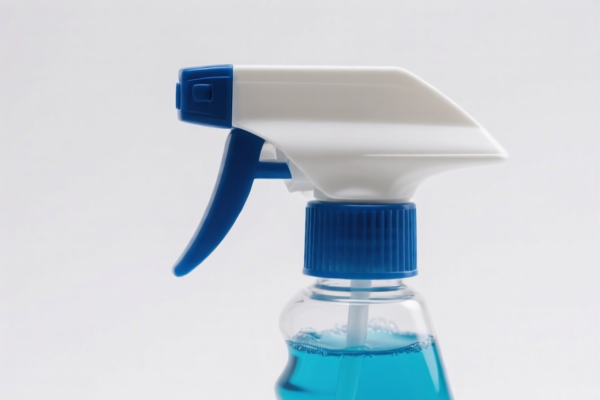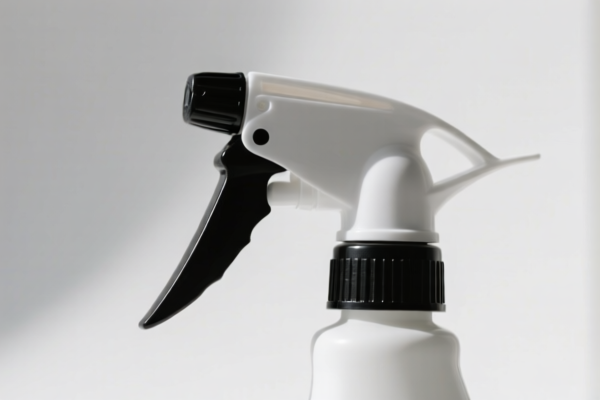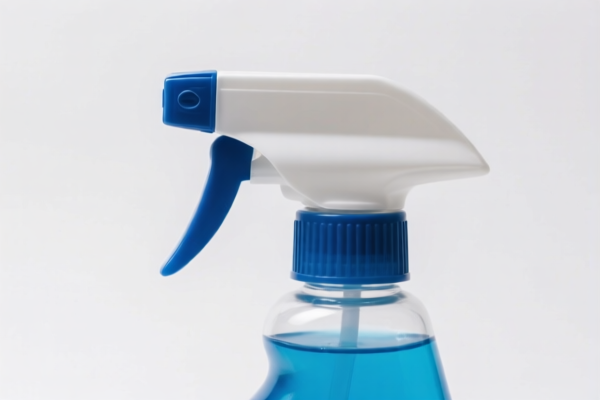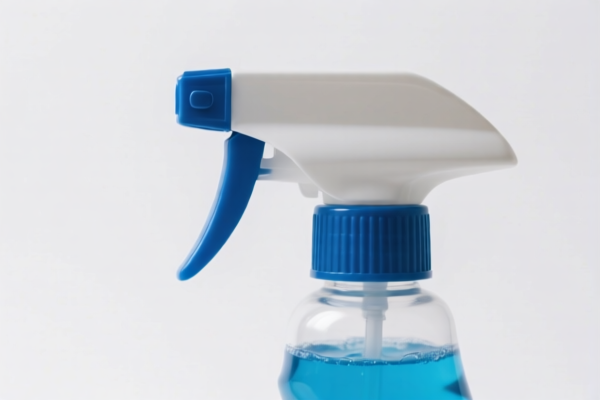| HS Code | Official Doc | Tariff Rate | Origin | Destination | Effective Date |
|---|---|---|---|---|---|
| 3825610000 | Doc | 55.0% | CN | US | 2025-05-12 |
| 3825900100 | Doc | 55.0% | CN | US | 2025-05-12 |
| 3402905030 | Doc | 58.7% | CN | US | 2025-05-12 |
| 3401190000 | Doc | 37.5% | CN | US | 2025-05-12 |




Cleaning Spray
Cleaning sprays are liquid cleaning agents dispensed in aerosol cans, trigger bottles, or pump bottles, utilized for removing dirt, grime, and stains from surfaces. They are a common household and industrial cleaning product.
Material Composition
The composition of cleaning sprays varies widely depending on their intended purpose, but common ingredients include:
- Water: The primary solvent in many sprays.
- Surfactants: Reduce surface tension, allowing the spray to spread and lift dirt. Types include anionic, cationic, non-ionic, and amphoteric surfactants.
- Solvents: Help dissolve grease, oil, and other stubborn residues. Examples include alcohols (ethanol, isopropyl alcohol), glycol ethers, and terpenes.
- Builders: Enhance the effectiveness of surfactants, often by softening water. Examples include sodium carbonate and sodium citrate.
- pH Adjusters: Control the acidity or alkalinity of the spray, influencing its cleaning power and suitability for different surfaces. Examples include citric acid, sodium hydroxide.
- Fragrances: Provide a pleasant scent.
- Dyes: Add color for identification.
- Preservatives: Prevent microbial growth.
- Propellants (Aerosol sprays only): Historically chlorofluorocarbons (CFCs), now typically hydrocarbons, compressed gases like nitrogen, or carbon dioxide.
- Disinfectants/Sanitizers (in some formulations): Kill bacteria and viruses. Examples include quaternary ammonium compounds, bleach (sodium hypochlorite), and hydrogen peroxide.
Purpose
Cleaning sprays serve a broad range of cleaning needs, including:
- General Purpose Cleaning: Removing everyday dirt and grime from countertops, floors, walls, and other surfaces.
- Disinfecting: Killing bacteria and viruses on surfaces.
- Degreasing: Removing grease and oil from kitchen surfaces, engines, and tools.
- Stain Removal: Targeting specific stains like food, ink, or mildew.
- Glass Cleaning: Providing streak-free cleaning for windows, mirrors, and glass surfaces.
- Bathroom Cleaning: Removing soap scum, mildew, and hard water stains.
Function
Cleaning sprays function by:
- Wetting the Surface: The liquid spreads across the surface to be cleaned.
- Loosening Dirt: Surfactants reduce surface tension and emulsify dirt and grime.
- Dissolving Residues: Solvents break down stubborn residues.
- Lifting Dirt: The cleaning agents lift dirt away from the surface.
- Disinfecting/Sanitizing (if applicable): Killing bacteria and viruses.
- Rinsing/Wiping: The loosened dirt and cleaning agents are removed by wiping or rinsing.
Usage Scenarios
- Household Cleaning: Kitchens, bathrooms, living areas, bedrooms.
- Commercial Cleaning: Offices, schools, hospitals, restaurants.
- Automotive Cleaning: Interior and exterior car surfaces.
- Industrial Cleaning: Machinery, equipment, floors, walls.
Common Types
- All-Purpose Cleaners: Versatile cleaners for general cleaning tasks.
- Glass Cleaners: Formulated for streak-free cleaning of glass surfaces.
- Bathroom Cleaners: Designed to remove soap scum, mildew, and hard water stains.
- Kitchen Cleaners: Degreasers and stain removers for kitchen surfaces.
- Disinfectant Sprays: Kill bacteria and viruses.
- Specialty Cleaners: Targeted for specific surfaces or stains (e.g., granite cleaner, stainless steel cleaner, upholstery cleaner).
- Aerosol Sprays: Dispensed via a pressurized aerosol can.
- Trigger Sprays: Dispensed via a manually-activated trigger pump.
- Pump Sprays: Dispensed via a pump mechanism.
Cleaning spray falls under preparations used for cleaning purposes. Based on the provided information, the following HS codes are relevant:
- 3402905030: Organic surface-active agents (other than soap); surface-active preparations, washing preparations (including auxiliary washing preparations) and cleaning preparations, whether or not containing soap, other than those of heading 3401: Other: Other: Other Cleaning preparations.
- 34: Chapter 34 covers organic chemicals, specifically soaps, detergents, and cleaning preparations.
- 02: Heading 3402 focuses on organic surface-active agents and preparations.
- 905030: This subheading specifically identifies "Other Cleaning preparations" which encompasses a broad range of cleaning products not classified elsewhere within the heading.
Regarding HS code 3402905030, the applicable tax rate is a base tariff of 3.7%, a surcharge of 25.0%, and a surcharge of 30.0% after April 2, 2025, resulting in a total tariff of 58.7%.
Customer Reviews
No reviews yet.